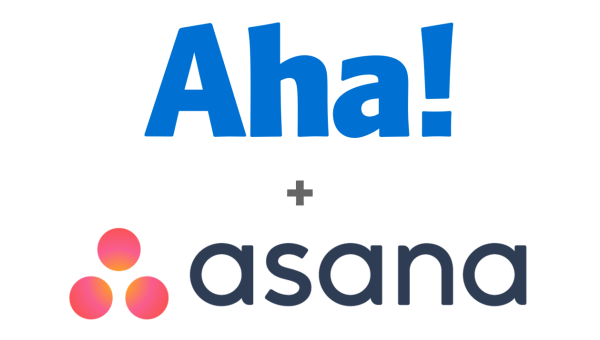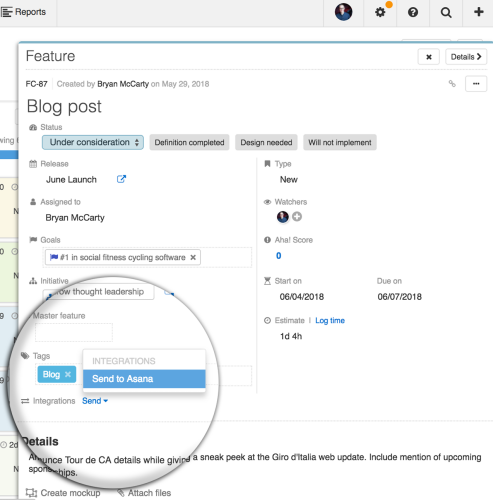 Asana is a well-known project management and tracking application with thousands of users across the globe. One reason it is popular is that it makes managing team projects and tasks easy. It also integrates with a great number of online tools for a variety of purposes. For example, Aha! is a leading product roadmap software. Users are able to connect their goals to strategic initiatives, create launch plans, view features dependencies, and more. They are able to do all these on a platform that helps them realize their why, when, and what of roadmapping. Now, it is easier to build products and manage projects with the new Asana integration. For a powerful reporting and exporting tool for Asana, give our own tool Bridge24 for Asana a try, or access it in their own Integration page.
Asana is a well-known project management and tracking application with thousands of users across the globe. One reason it is popular is that it makes managing team projects and tasks easy. It also integrates with a great number of online tools for a variety of purposes. For example, Aha! is a leading product roadmap software. Users are able to connect their goals to strategic initiatives, create launch plans, view features dependencies, and more. They are able to do all these on a platform that helps them realize their why, when, and what of roadmapping. Now, it is easier to build products and manage projects with the new Asana integration. For a powerful reporting and exporting tool for Asana, give our own tool Bridge24 for Asana a try, or access it in their own Integration page.
Integration Functionality – What Is Possible
The new bi-directional integration brings several functionalities. Product managers using Aha! can map records of their initiatives, releases, features, and requirements to Asana tasks. They can also map default or custom fields in Aha! to similar fields in Asana. Moreover, they can specify the direction of how the updates should flow between the 2 systems. Another supported functionality is the ability to send changes from Aha! either automatically or go through review and approval first before sending.
Integration Benefits – How to Get the Most Value
One way for Aha! and Asana users to get the most value from this integration is to first build their product and launch plans in Aha! They can create features for tasks that they should complete for a successful launch. For instance, creating a blog post.

The next step is to configure the integration to send the features to a project in Asana. Each feature will create a corresponding task in the project and will establish a link between the two. As such, each team member can focus on their specific area of the launch without the risk of duplicating efforts.

Stay synced and informed
When the tasks in Asana are complete, the status of the corresponding feature in Aha! will be updated. Therefore, users are kept up-to-date of what is happening with the project and the status of the product launch. Furthermore, they can review if new tasks are created or added to the project. They have the option to either import them to Aha or ignore the new tasks. Should they choose to import, the new records in Asana will become new features in the release.

Integration configurations
Users can control which record types get sent to Asana. They can also configure how each field within that record type syncs. When mapping features to tasks, they can map custom fields to corresponding custom fields. For each mapping, they have full control of the sync direction. They can choose from one way, one way (set once), or two way.

Additional Details
To set up the integration with Asana, users must be a Product Owner in Aha! They should also have an Asana account with access to create/edit records in the specific project they wish to integrate. The configuration involves a few steps. First, they should create the integration in Aha! They should next authenticate with their Asana username and password. They should choose which Asana workspace and project to integrate. The last step is to map the records.
Manage Projects, Build Products
Asana helps teams organize their projects and track them as they move work forward. The Aha! integration improves collaboration as teams work together to build and bring products to market. To learn more about the latest Asana integrations, features and other product updates, visit them also on Facebook, Twitter, LinkedIn or YouTube.
Leave A Comment